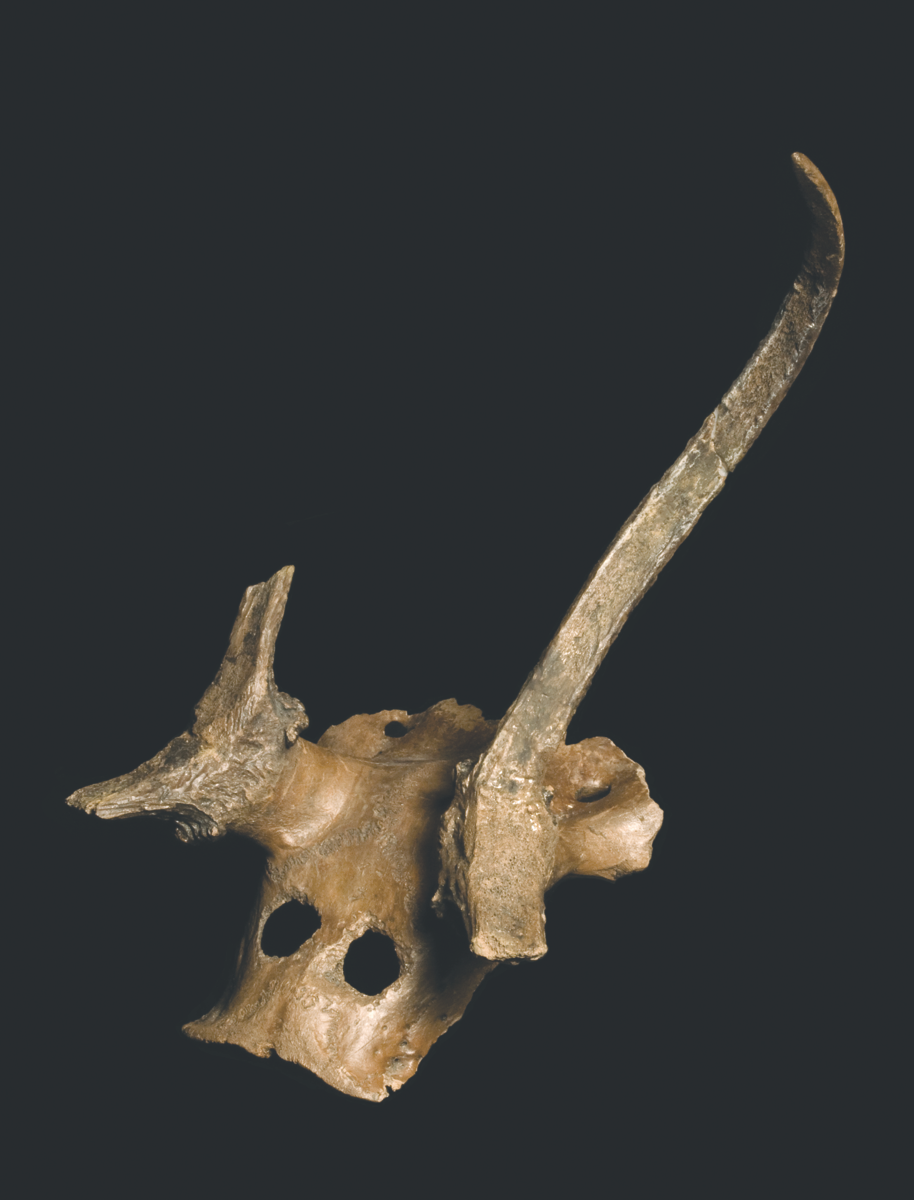ARCHIVED EXHIBITION
Red-deer frontlet. Mesolithic.
Star Carr, Seamer, Yorkshire, England.
MAA 1953.61 A. Photography by Jocelyne Dudding.
Li Ka Shing Gallery
Sometimes in archaeology we come across objects that truly intrigue us. The mysterious 11,500-year-old headdresses, found at the Mesolithic site of Star Carr in Yorkshire are just such an example. Made of deer skulls with antlers attached and holes bored into them, it is impossible not to look at the headdresses and wonder how they were worn and who wore them. Were they disguises for hunting, or perhaps elaborate costumes worn by Mesolithic shamans?
These questions and many others will be explored throughout this exhibition which focusses on the remarkable discoveries made at Star Carr. 11,500 years ago, Star Carr was situated on the shore of a lake. The lake has long since dried up, but some areas are still waterlogged, preserving bone, antler and wooden objects and providing us with a unique perspective of Mesolithic life.
When people first arrived at Star Carr over 11,500 years ago they built a camp close to the lake shore. We don’t know how many people there were or how long they stayed but they kept returning to the same place for the next 200-300 years. The main living area was located on dry ground away from the lake. Here archaeologists have discovered thousands of pieces of flint showing where people made stone tools. Closer to the lake edge they built wooden platforms, used as walkways or boat jetties. Large animals such as red deer and elk were hunted in the nearby woodland and boats gave access to the lake and its two islands.
Read more about the site here.
There is not an accompanying catalogue for this exhibition, but you can download the new publications about the site for free (or order a print copy) from: https://universitypress.whiterose.ac.uk/site/books/







